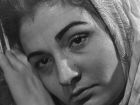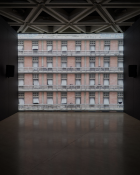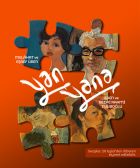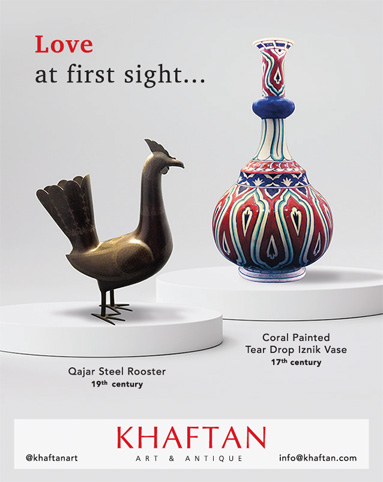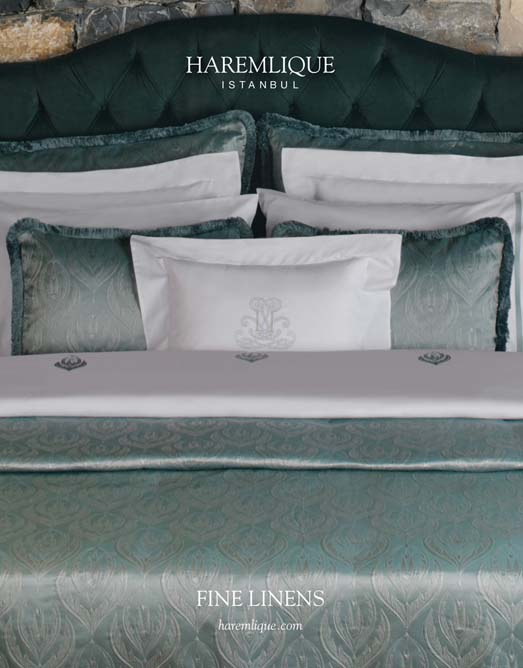A concert by players from the Borusan Istanbul Philharmonic Orchestra, recorded on April 8, was streamed online on June 13. Conducted by Cem Mansur, they played works with a retro flavour by Ligeti, Respighi and Stravinsky. I, in my naiveté, believed that it would be possible to access the concert online for at least a month. It transpires, however, that it was available on the borusantv website for only two weeks. And so, having written my blog, I found – to my chagrin and consternation – that the performance by the Borusan Orchestra was no longer available. Accordingly, in this review I shall list performances of the works concerned by other ensembles and other conductors.
Readers of this blog who listened to the previous Borusan concert on March 21 and who have an aversion to the avant-garde music of the 20th century may well recoil in horror at the mention of György Ligeti, whose Chamber Concerto No 1 was played on that occasion. Please rest assured that his Old Hungarian Ballroom Dances (Hungarian title: Régi magyar társas táncok) are a socially-distanced stroll in the park compared with the Chamber Concerto. I hate to say it, but ‘easy listening’ (ouch!) would not be an entirely inappropriate description.
For this, we may well have the brutal Stalinist regime that came to power in Hungary after World War II to thank. A decree issued in 1948 banned composers working in the People’s Republic of Hungary from writing ‘modern music’. Ligeti’s pieces, written in 1949 and scored for flute, clarinet and strings, are seemingly innocuous arrangements of ballroom dances composed by the 18th-century Hungarian composers János Bihari, János Lavotta, Antal Csermák and Márk Rózsavölgyi.
Ligeti himself described the composition of Old Hungarian Ballroom Dances in the following words (quoted here in a translation by Louise Duchesneau):
While I was still a student at the Budapest Music Academy in 1949, I was requested by public radio to cultivate the ‘national heritage’ by writing a suite on dance melodies of the Biedermeier period, that is, around 1800.
The Biedermeier period, for those who don’t know (of whom I was one until I looked it up), is summarised thus by Wikipedia:
The Biedermeier period was an era in Central Europe between 1815 and 1848 during which the middle class grew in number and the arts appealed to common sensibilities… There were two driving forces for the development of the period. One was the growing urbanisation and industrialisation, leading to a new urban middle class… The other was the political stability prevalent under Klemens von Metternich following the end of the Napoleonic Wars and the Congress of Vienna. The effect was for artists and society in general to concentrate on the domestic and (at least in public) the non-political. Writers, painters and musicians began to stay in safer territory…
That phrase ‘stay in safer territory’ would no doubt have struck a chord with composers such as Ligeti who had been conscripted into taking part in a social engineering project with teeth – teeth that were turned inwards to discourage internal dissent.
When I described these pieces (above) as ‘seemingly innocuous’, I did so for a reason: not everyone sees them as entirely barb-free. A review in the New York Times by Anthony Tommasini, its chief music critic, has this to say:
‘Below the surface of this genial suite of dance tunes, you detect the young composer sticking it to the Soviet cultural police with seemingly ironic touches: sour voicing of chords; excessively filigreed clarinet riffs; sturdy bass lines that turn thumpy.’
Bearing this comment in mind, one wonders if the unnecessarily thick orchestration at the beginning of the first of the dances (Andante), with the clarinet’s curlicues contributing very little, was a raised-finger gesture on Ligeti’s part. As for the Borusan Orchestra’s performance, part of the muddiness of texture that I observed in this movement was, I fear, due to the fact that their co-ordination did not really begin to gel until the second dance (Allegro – Trio, Pochissimo meno mosso), which has a much more pronounced rhythm than the first.
The movement that prompts me to give serious consideration to the claim that Ligeti was exercising his sense of irony is the third (Andantino maestoso), which starts at 02:54 in the performance listed below. Over-long, it scrupulously avoids creating contrast: the melody is never given to anyone except the violins, and the interjections from the woodwinds are just weird, serving no musical purpose. The bass line, meanwhile, is purely and simply stodgy. With the fourth of the dances (Trio - Allegro moderato, beginning at 07:49), however, we are back to normality: the composer suddenly ‘discovers’ that he has certain colouristic resources at his disposal, and there are some nice flute-clarinet duets. Ligeti may well have been concerned to cover his tracks here but, whatever his motivation may have been, the result is pleasingly anodyne. Here are the Old Hungarian Ballroom Dances in a recording for which two orchestras and two conductors are credited. I cannot tell if the performers are the Asko Ensemble, an Amsterdam-based outfit conducted here by the recentlyd eceased Reinbert de Leeuw (1938–2020), or the Schönberg Ensemble, conducted by György Ligeti himself.
The Respighi that was the second item in the Borusan concert begins in the key of A, which had dominated the Ligeti. I am obliged to record that by this point I was becoming a little weary of that key. Niggles aside, Gli uccelli (‘The Birds’) came as a relief after the somewhat heavy-handed Old Hungarian Ballroom Dances: it was a treat to hear some brass instruments, and the long-absent oboe and bassoon.
The Italian composer Ottorino Respighi (1879–1936), best known for his tone-poems Fountains of Rome, Pines of Rome and Roman Festivals, composed Gli uccelli in 1928. This suite, based on music by composers of the 17th and 18th centuries, is in five movements: Prelude, La colomba (‘The Dove’), La gallina (‘The Hen’), L’usignuolo (‘The Nightingale’) and Il cucù (‘The Cuckoo’). The orchestration, for me the chief attraction of this work, frequently imitates bird sounds and movements. Not for nothing did the composer study, albeit briefly, with master orchestrator Nikolai Rimsky-Korsakov. Wikipedia again:
In the winter of 1900, Respighi accepted the role of principal violist in the orchestra of the Russian Imperial Theatre in Saint-Petersburg during its season of Italian opera. While there, he met Russian composer Nikolai Rimsky-Korsakov, whom Respighi greatly admired, and studied orchestration and composition with him over the course of five months. Respighi returned to Russia in the winter of 1902 for further performances and received more tuition from Rimsky-Korsakov; both meetings heavily influenced his orchestrations.
British readers may recognise the first movement of The Birds’as the opening and closing theme of the BBC TV antiques quiz show Going for a Song, which was aired between 1965 and 1977 and featured Arthur Negus as resident expert. In the second movement (‘The Dove’, which begins at 03:08 in the performance below) there is an extended oboe solo that was very well played by the Borusan Orchestra’s oboist, who shone throughout the concert. This is followed by a fluttering of wings at 04:50 – the Borusan violins did not, I am afraid, sound entirely convincing in the high register – and a violin solo at 05:53; the piece ends with an interesting harp arpeggio at 07:18.
In the third (‘The Hen’, 07:30), the clucking, in which the bassoons play a part, is punctuated by muted trumpets. It is refreshing to have a new timbre after so much string and woodwind sound. I particularly like the ending, in which a downward swoop begun by the clarinet at 10:14 is taken over by the bassoon. This is followed by a final chord to which the trumpets add piquancy.
This movement is based on La Poule (‘The Hen’), written for harpsichord by the French composer Jean-Philippe Rameau (1683-1764). For those interested in listening to the original, and thereby seeing what Respighi’s treatment added to the piece, here it is played on the piano by the infinitely versatile Grigory Sokolov:
More instruments make their appearance in the fourth movement, ‘The Nightingale’ (10:28). It begins with a pleasant interweaving of woodwinds over a gently growling bass line. This is followed (at 12:29) by an interesting flute-horn duet with interjections from the piccolo and celesta, and the ending provides a rare opportunity for the double basses to shine. In the fifth movement (‘The Cuckoo’, 14:09), there is some nice writing for the woodwinds at 15:09, while the return of the theme of the Prelude at 17:40, this time played by the celesta, is another welcome contrast, expertly prepared for by the composer with changes of tempo. The Borusan Orchestra’s woodwind and brass departments did well in this movement, though the piccolo tended to stray towards the sharp end – something that this instrument is wont to do.
Here is Respighi’s The Birds in a recording by the Philadelphia Orchestra under the baton of Eugene Ormandy (1899-1985), the Hungarian-American conductor who was this orchestra’s Music Director for a full 44 years:
The last item on the Borusan Istanbul Philharmonic’s programme was Stravinsky’s Pulcinella Suite (1922). This work, which marked the beginning of his ‘neo-classical’ period, is in fact a much-shortened version of music he had written for a ballet of the same name commissioned by Sergei Diaghilev of the Ballets Russes shortly after the First World War. Phillip Huscher, on the Chicago Symphony Orchestra website, tells the story of the project in the following words:
For all its importance to Stravinsky’s musical development, the idea for Pulcinella was not his, but that of the great Russian impresario Sergei Diaghilev. By 1919, Diaghilev and the young composer were no longer on the best of terms, and Diaghilev was determined to patch up their differences and revive the collaboration that had produced The Firebird, Petrushka and The Rite of Spring. One spring afternoon, when he and the composer were strolling in the Place de la Concorde, he proposed that Stravinsky take a look at some 18th-century scores with the idea of orchestrating them for a ballet. “When he said that the composer was Pergolesi, I thought he must be deranged,” Stravinsky later remembered, thinking unhappily of the Stabat Mater and the slight comic opera La serva padrona. Finally, Stravinsky promised to at least take a look.
“I looked, and I fell in love,” the composer recalled. And so the two men began to plan. Diaghilev showed Stravinsky a manuscript dating from 1700 which he had found in Italy; the subject of its many comic episodes was Pulcinella, the traditional hero of the Neapolitan commedia dell’arte, and a perfect focus for the action of their own 18th-century ballet. Meanwhile, Stravinsky had been sifting through the pile of manuscripts that Diaghilev had thrust in his hands, picking and choosing among trio sonatas, assorted orchestral works and operatic selections. More than half of these works are not even by Pergolesi, as we have since learned; among Stravinsky’s unwitting collaborators in Pulcinella are a handful of forgotten 18th-century composers, including the Venetian Domenico Gallo; Count van Wassenaer, a Dutch diplomat; and Carlo Ignazio Monza, a Milanese priest…
What Stravinsky created was, in fact, something entirely his own. He left the 18th-century bass lines and melodies alone, but the inner harmonies, the rhythms and the sonorities all bear Stravinsky’s stamp, in one measure after another. “The remarkable thing about Pulcinella,” Stravinsky later said, “is not how much but how little has been added or changed.”…
The ballet had its premiere at the Paris Opera House in May 1920. The choreography was by Léonide Massine, with scenery and costumes by Picasso – the collaboration of these two had been part of Diaghilev’s lure… This dream collaboration was no picnic, however. Diaghilev asked Picasso to redo the designs twice and at one point threw his drawings on the floor and stomped on them. In the end, according to Diaghilev biographer Richard Buckle, “the finished result, a Neapolitan street scene conceived in Cubist terms and painted blue, grey, dark brown and white, the houses framing a view of the bay, with a boat, Vesuvius and the full moon, is one of the most beautiful stage settings ever made.” (The stunning white floor had to be repainted for each performance.)
Pulcinella was a triumph – “one of those productions,” the composer reported, “where everything harmonises, where all the elements – subject, music, dancing and artistic setting – form a coherent and homogeneous whole.” Yet only the music endures today. (According to the composer, Picasso’s backdrop ended up in storage at the Paris Opera, where it faded irrevocably, save for the moon, “whose yellow had been renewed, in part, by a cat.”)
The orchestral suite followed in 1922, scored for woodwinds without clarinets; strings divided into concertino and ripieno (the former being a group of soloists, and the latter the bulk of the string section who do not play as soloists), just as they are in the baroque concerto grosso; and no percussion.
Orrin Howard, on the Hollywood Bowl website, describes the changes Stravinsky made to the original 18th-century pieces:
Maintaining most of the original melodies and basses, Stravinsky ‘touches up’ the music with added notes and ostinatos, which provide harmonic pungence and rhythmic tautness. He subtly adjusts the phrases, breaking up the formal symmetry, and he colours with an orchestration of characteristic élan and transparency.
Stravinsky’s ‘neo-classical’ period followed his so-called ‘Russian’ period and preceded his flirtation with serial (that is, twelve-tone) music – a genre invented by Schoenberg. The composer himself said: “Pulcinella was my discovery of the past, the epiphany through which the whole of my late work became possible.” Among his major works in the retro genre, which lasted a full 30 years, are the opera-oratorio Oedipus rex (1927), the ballet Apollon musagète (1928), the Symphony of Psalms for chorus and orchestra (1930), the Concerto in E-flat (best known as ‘Dumbarton Oaks’, 1937–38) and the English-language opera The Rake’s Progress (1951).
But where did the idea of forsaking the iconoclastic modernism of his ‘Russian’ period (which culminated in 1913 with The Rite of Spring) in favour of blasts from the Baroque past, actually come from? The answer is: from the mind of Diaghilev, who had been encouraged by the success of The Good-Humoured Ladies, a ballet danced to the music of sonatas by Domenico Scarlatti (1685–1757) in an arrangement by Vincenzo Tommasini. It had been performed by his Ballets Russes in Rome in 1917.
In recognition of the fact that The Good-Humoured Ladies was indirectly responsible for the creation of some of Stravinsky’s best-known works – which then had a knock-on effect on composers such as Richard Strauss, Béla Bartók, Paul Hindemith and Francis Poulenc (not to mention Ottorino Respighi) – I will now list a performance of it by the Cleveland Orchestra, conducted by Louis Lane. Legend has it that Domenico Scarlatti had a pet cat that was prone to walking across the keyboard, and the highly unusual theme of the ‘Cat’s Fugue’ which precedes the finale is said to have come from one of these felicitous improvisations. One cannot help wondering if the cat that ‘renewed the colouring’ of the yellow moon in Picasso’s backdrop for the Pulcinella ballet had been emboldened by the previous feline contribution to the work that sparked Diaghilev’s, and later Stravinsky’s, enthusiasm for all things neo-classical. Anyway, here is The Good-Humoured Ladies. The ‘Cat’s Fugue’ starts at 15:38:
Now, a (very) short extract from the ballet itself, danced by Christina McDermott. The orchestra is that of the Royal Opera House, Covent Garden:
In the recording listed below, Stravinsky’s Pulcinella Suite is performed by the Los Angeles Chamber Orchestra, an ensemble containing a goodly contingent of ladies that is conducted by Jaime Martín, their Spanish-born Music Director. There are eight movements: I Sinfonia (Ouverture); II Serenata; III Scherzino – Allegretto – Andantino; IV Tarantella; V Toccata; VI Gavotta (with two variations); VII Vivo (Duetto); VIII Minuetto – Finale. The major sevenths Stravinsky added to the chords to give them extra punch are especially noticeable at 00:43. Watch out for the smile that comes over the face of the hirsute cellist as he completes his solo at 01:27.
The sanguineness of temperament of the 18th century is sorely needed in times like these, and I must admit that a chaliceful of cheerfulness in the form of Stravinsky’s Pulcinella Suite perked me up no end: it was a very timely choice of work. Despite my occasional strictures, in the main I enjoyed the Borusan Istanbul Philharmonic Orchestra’s playing; their woodwind and brass departments, in particular, did well. Many thanks, therefore, to the Borusan Istanbul Philharmonic Orchestra and conductor Cem Mansur for bolstering our buoyancy in a time of direness. What a shame that readers have now been deprived of the chance to enjoy it.

